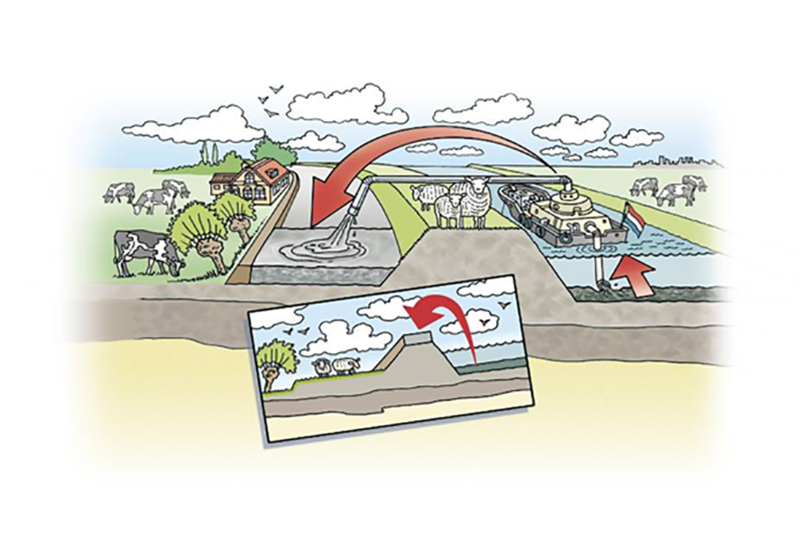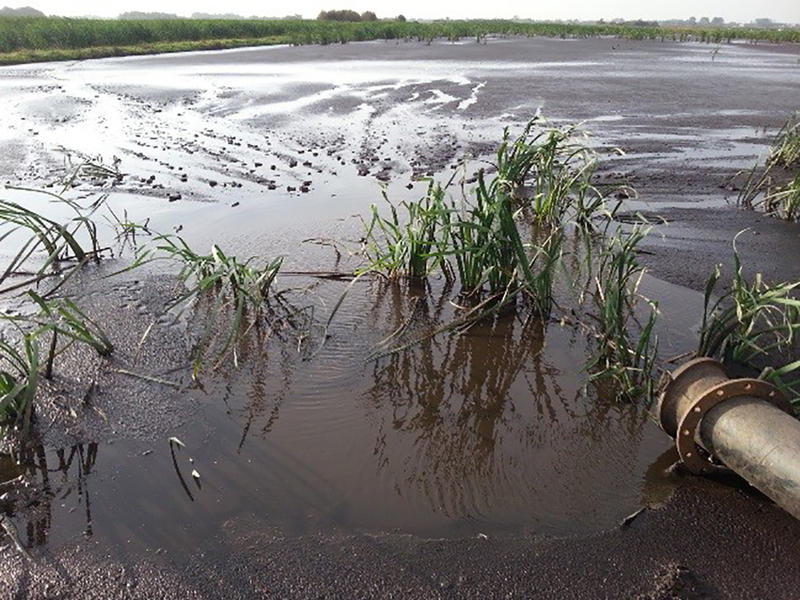Raise elevation of low-lying peatlands
Lift up of Lowlands makes use of a millennium year old technique of reapplying sediment on land. However, over the last few centuries people have focussed on building dykes to protect the land from flooding, limiting natural accumulation of sediments. Secondly, groundwater management to allow agricultural use of the low-lying polder areas, causes subsidence of these areas, due consolidation and oxidation of organic fraction materials. Lift up of Lowlands goes back to the roots of sediment reapplication to compensate for subsidence and to improve the lands fertility.
Since the used sediments consists of ‘thick water’ (with a density of around 1,100 kg/m3), the project focus is to study the sediment drying and shrinking behavior. At the same time, 90% of the sediment consists of organic matter. Dewatering leads to air penetration, which can accelerate the degradation of organic matter.
The project studied the drying behavior of the sediment and the release rate of nutrients. Based on in field subsidence monitoring, sediment parameter characterization and detailed studies on crack formation (important for dewatering) and the organic matter composition (determining the degradation rate and the release of nutrients), the subsidence and oxidation rate of organic rich sediment used on land can now be predicted better. This also helps farmers, since subsidence due to dewatering leads to an increased sediment strength. Farmers want to know when the land is accessible for cattle or tractors.
Graphical information:


